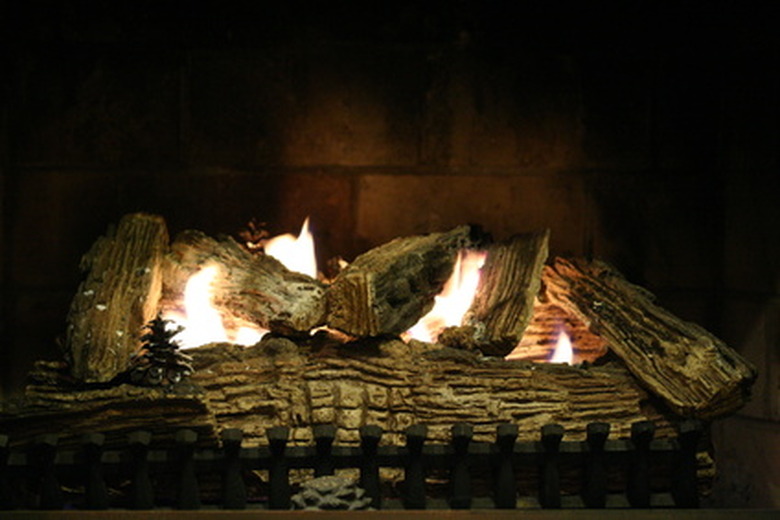How To Tell If Your Gas Logs Are Vent-Free
Tip
Vent-free logs are designed to be more realistic, but since they must be attached to the gas burner, they are stationary and cannot be shifted.
Warning
Whether the fireplace is vented or vent-free, it's always a good idea to place a carbon monoxide detector in the room with the fireplace. The Oxygen Depletion Sensor is one layer of protection, but it only required on a vent-free fireplace.
The term hearth and home takes on new meaning when designing a fireplace. Gas fireplaces provide heat, light and beauty. Vented and vent-free logs are both used in a gas fireplace, but they act very differently. Vented logs create a large, realistic fire with dancing flames. This type of fire requires a chimney for safety. Vent-free logs do not need a chimney, but provide a smaller flame. These logs are designed to hold the heat and reflect it into the room.
Step 1
Inspect the logs. All vent-free logs are firmly attached to a U-shaped burner and cannot be moved. If the concrete logs are loose, the logs are designed for vented use.
Step 2
Follow the gas line from beneath the logs to where it disappears in the wall or floor. If the gas is merely contained by a simple gas line, then the logs are vent free. If there is a small cylinder attached to the gas line, then the logs are vent-free. This is called the Oxygen Depletion Sensor and is located just outside the range of the fire. It measures the oxygen in the area. Federal law mandates that all vent-free logs be equipped with an Oxygen Depletion Sensor. When the oxygen level drops, the sensor turns off the gas and stops the fire.
Step 3
Turn on the fireplace. If the flames reach above the gas logs and the look like a wood burning fireplace, then the logs must be vented. If the flames are small, an have a blue cast, the fireplace is vent-free.
